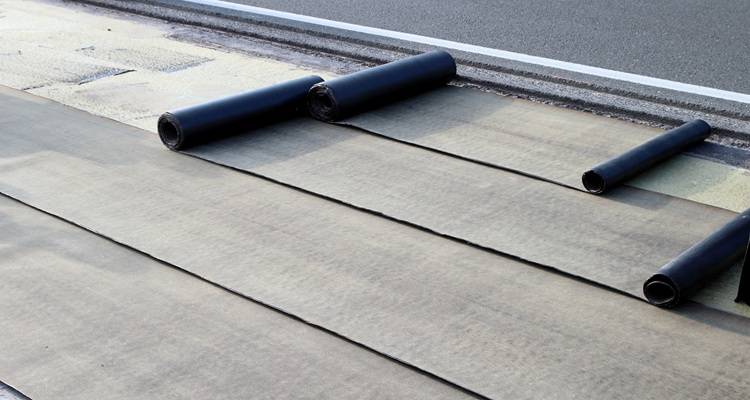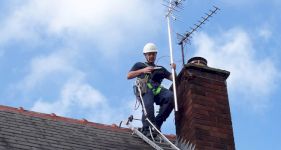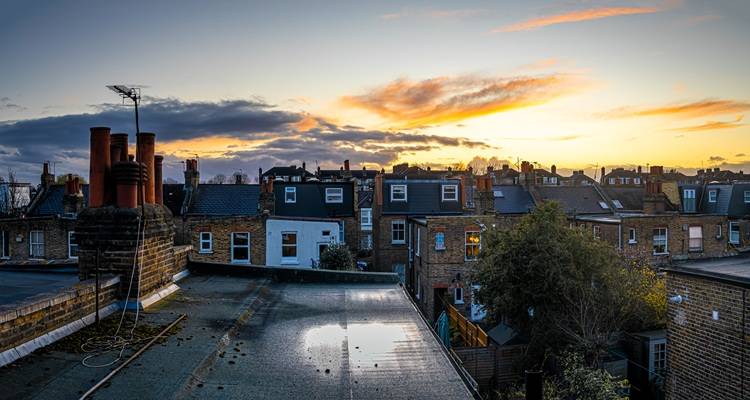Roof Installation Guide
Thinking about getting a new roof installed?
Replacing your roof can be a big job that requires a lot of work. In this guide, we'll go over everything you need to know before installing a new roof, including:
- The different types of roofing materials
- The pros and cons of installing a new roof
- The best methods for cleaning and maintaining your roof
- The questions you should ask when hiring contractors to carry out the work
Let's get started!
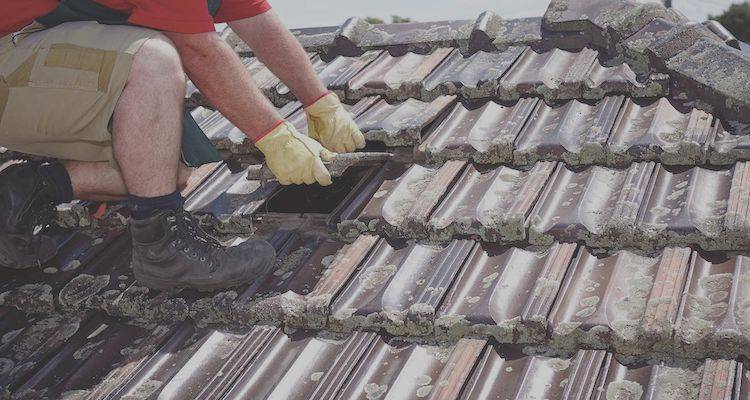
Table of Contents
- What is Roofing?
- Types of Roof Materials
- What Are the Pros and Cons of a New Roof?
- How Much Does Roofing Cost?
- How to Replace a Roof
- How Long Does It Take to Replace a Roof?
- Building Regulations & Planning Permission for New Roofing
- How to Clean and Maintain a Roof
- Questions to Ask When Hiring a Roofer
- FAQs
What is Roofing?
A roof is an area covering the top of a building. It is important as it protects the building from rain, snow, sunlight, wind, and extreme temperatures.
There are many different types of roofs, such as flat roofs, pitched roofs, or a combination of different types:
- Pitched or sloping roofs are most commonly used on houses as the slope allows water to drain off them easily.
- Flat roofs are more common on homes in warmer climates where there is no need to worry about rain draining off them.
Whatever your roofing material, it’s important to ensure that the roof on your home stays in good condition, as damage can cause leaks and may make your house very cold and draughty.
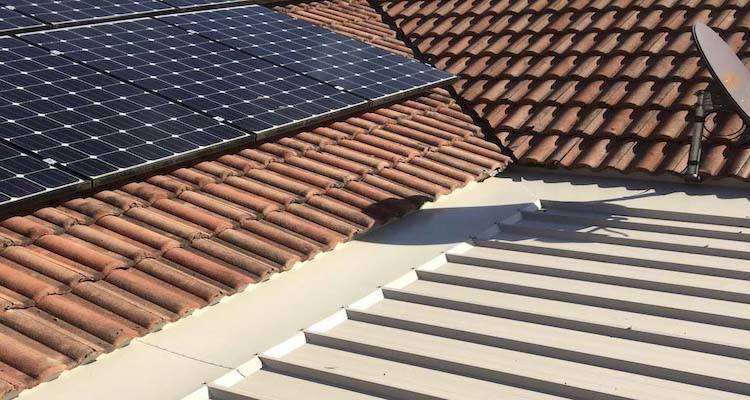
Types of Roof Materials
There are several different types of roofing material, making it difficult to determine which roofing material is best for you and your home.
Before making a decision, you should consider how long you want your roof to last, how well you want it to complement the design of your house, and the size of your budget.
Here are some of the most common roofing materials in the UK, along with their pros and cons to help make your decision a little easier:
Clay Tiles
Clay tiles are made from natural clay fired in a kiln. They are made from natural materials, but they require a lot of energy during the manufacturing process.
They are usually long-lasting and require very little maintenance. However, they can be prone to breaking as they can be brittle, and they also tend to be quite expensive.
Clay roof tiles cost £0.80 to £2.50 per tile.
Pros
- ✔ Made from natural, aesthetically-pleasing materials
- ✔ Long-lasting, requiring minimal maintenance
Cons
- ✖ The manufacturing process isn't good for the environment
- ✖ Clay tiles can be expensive and prone to breaking
Concrete Tiles
Concrete roofing tiles are known for their durability and longevity, being weather-resistant to wind and rain. However, they can become brittle with age and are prone to cracking if handled incorrectly, and are heavier than other roofing materials, which may require extra structural support.
Concrete roof tiles cost £1 to £3.50 per tile.
Pros
- ✔ Long-lasting and low-maintainence
- ✔ Fire resistant
Cons
- ✖ Less aesthetically pleasing than other roof materials
- ✖ Concrete tiles will change colour over time
Natural Slate
Slate roofing is one of the oldest roofing materials, known for its impermeable, durable, and versatile qualities.
As a result, a good-quality slate roof will usually outlast all other roofing materials.
Slate roof tiles cost £3 to £5 per tile.
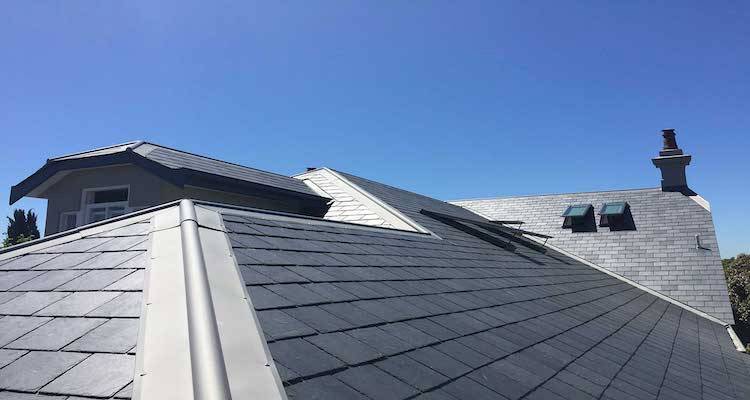
Pros
- ✔ Aesthetically pleasing and versatile
- ✔ Durable and immune to all organisms
Cons
- ✖ Can be expensive
- ✖ Slate tiles can be dangerous if they become loose
Asphalt/Bitumen Composition Shingles
This is a lightweight roof covering made up of fibreglass mixed with asphalt and coated with mineral granules.
This type of roof covering is used mostly on outbuildings, sheds, and garages, and is not suitable as a residential housing roof material under the UK Building Regulations.
Pros
- ✔ Low cost roofing material
- ✔ Lightweight and easy to install
Cons
- ✖ Not suitable for UK residential houses
- ✖ Can be damaged by the elements
What Are the Pros and Cons of a New Roof?
There are several pros and cons to installing a roof. Below is a list of the main advantages and disadvantages of going ahead with this type of work:
Pros of a New Roof
Fixes Roofing Issues
If there are any problems with your roof, these will be fixed when your new roof is installed.
Not all roofing issues are visible, and so if you have any underlying problems within your roof structure, these will be noticed and repaired during your new roof installation.
Changes The Look
Installing a new roof gives you the opportunity to change the look of your roof. This means that you can update the look of your roof to match your home and improve the aesthetics.
As times move on, the look of your home may change, and an updated roof can accommodate and complement this new look.
Increases Home Value
Although a whole new roof can be quite a large investment, it will pay off through the increase in your home’s value.
A new roof will not only make your home look more appealing on the outside, but it will also be more durable and more reliable than an older roof. This is something that potential buyers will look fondly on when you come to sell your home.
Long-Lasting
New roofs are made from durable materials and are usually built to last a very long time. So if you are planning on keeping your home for many years, you can rest assured knowing that you have a brand new roof that will last for the duration of your stay in that property.
Cons of a New Roof
High Up-Front Cost
A new roof is a very large investment. It will cost you a lot of money upfront, as you will need to pay for all of the materials, plus the labour and waste removal.
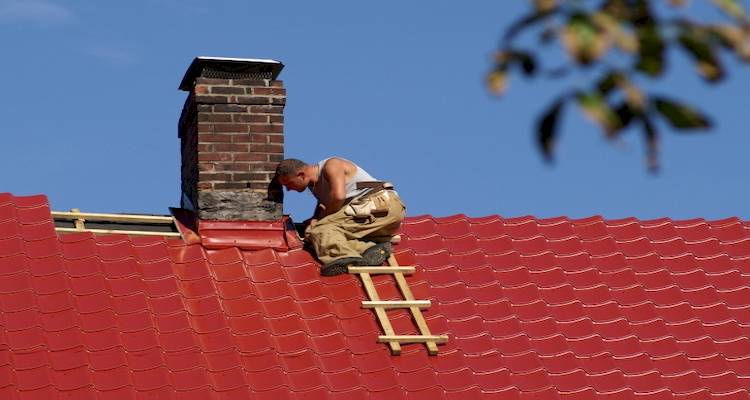
However, a new roof will mean you won’t have to pay as much or as often for roof repairs, and the value of your home will increase. A new roof can also make your home more energy-efficient. With this in mind, the initial payment will pay off quite quickly.
Work Can Be Disruptive
A new roof installation is not a quick or easy job, and you may have to vacate your home for a while during the installation.
Depending on the size of your home, a new roof installation could take several days and can be quite disruptive, so this is something to bear in mind.
How Much Does Roofing Cost?
If you are considering getting a new roof for your home, then you may be wondering – how much does a new roof cost?
The average cost for a roof installation in the UK is around £5,250.
The cost of replacing a roof will vary depending on several factors:
- The type of roofing material being installed
- The size of the roof
- The difficulty of the job
- Your location in the UK
To put that into context:
If you're looking for a smaller roof replacement on your garage or outbuilding, this will be cheaper than a residential house re-roof. The average cost to replace a flat roof is around £2,500.
If you're thinking about saving some money, you can opt to replace your roof ridge tiles instead of your entire roof. The cost to replace roof ridge tiles is around £300.
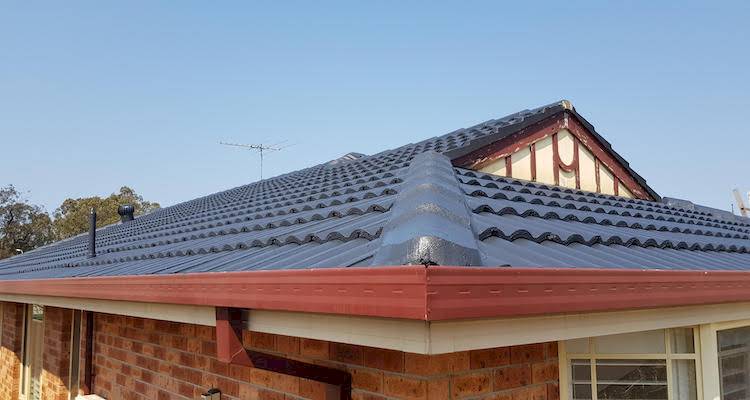
Typical day-rates for roofers are around £200 to £275, or £25 to £35 per hour.
Those based in London can expect to pay more for labour costs than those based in the north or other parts of the UK.
How to Replace a Roof
Having a roof replaced is an extensive job. It’s best to hire professionals for this type of work to ensure everything is done safely and correctly.
Below is an overview of what you can expect to happen during a new roof installation:
Removing the Old Roof
Before you can start installing a new roof, the original roof will need to be removed. This step will require a lot of work and some specialist tools and equipment to complete. Some old roofing material could fall during this stage, and this could be dangerous.
With this in mind, it’s a good idea to cover and protect any foliage or garden materials before the roof removal begins. The roof will have to be removed when you’ve already got all of the materials and supplies for the new roof so that your property is without a roof for as little time as possible.
Inspecting The Materials Underneath
The new roofing materials will need a solid base, so it’s important to inspect all parts underneath to ensure it’s suitable for the new roof. If there is any damage to the underneath part of the roof, this will need to be replaced or fixed before any further work can commence.
Preparing The Roof Surface
Before the new roofing materials can be installed, there are some additional preparation steps involved. Firstly, a drip edge will need to be installed. This is a non-corrosive material that acts as a barrier on the edge of the roof to prevent any water from getting underneath and damaging the base.
Next, an underlay will be installed across the entire length of the roof. This prevents water from getting through to the base and causing damage to the underneath part of the roof.
New Roof Installation
Now, the new roofing materials can be added. The installation method and the time it takes to install it will depend on the type of roofing materials you have chosen.
Some roofing options can be quite difficult to install or could be brittle and may easily break during the installation. With this in mind, the contractors will need to be extra cautious during the installation process.
Cleaning Up and Final Inspection
Once the new roofing materials have been added, the contractors will then clean up all of the mess and remove any debris that has been left behind from the job.
They will then thoroughly inspect the new roof to make sure it is completely safe and secure and to ensure there are no flaws in the finished roof. Once the inspection has taken place, the roof will be complete.
If you are looking for information on replacing roof tiles rather than installing a whole new roof, you can find out how to replace roof tiles instead.
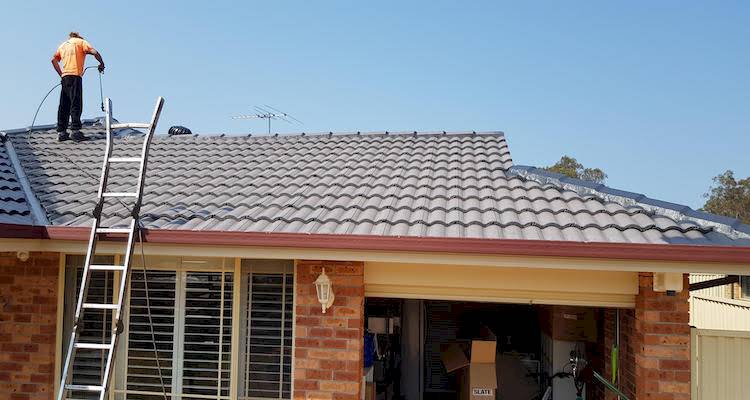
How Long Does It Take to Replace a Roof?
A new roof installation will generally take around 1 to 3 days to complete.
The exact length of time will depend on a number of factors:
- The size of the property
- The roof design
- The structural integrity of the roof
- The type of roofing materials being used
- The number of contractors working on the job
- The weather conditions
If you're replacing a few roof tiles rather than replacing the entire roof, this can usually be completed within a few hours.

Building Regulations & Planning Permission for New Roofing
When you are re-roofing your home, this work will usually need building regulations approval. There are different rules depending on the type of roof that you’re working on. Below is an overview of the rules for different types of roofs:
Flat Roofs
Some small repairs to flat roofs will not require building regulations approval.
However, if the roof includes integral insulation, you may need to update the thermal element of the roof. This means that you will reduce the amount of heat lost through the roof by upgrading the insulation as required by building regulations.
Pitched Roof
If you are replacing your roof with different materials to the original roof, then you will most likely need approval via building regulations. This is to ensure the roof is adequate in terms of structural stability.
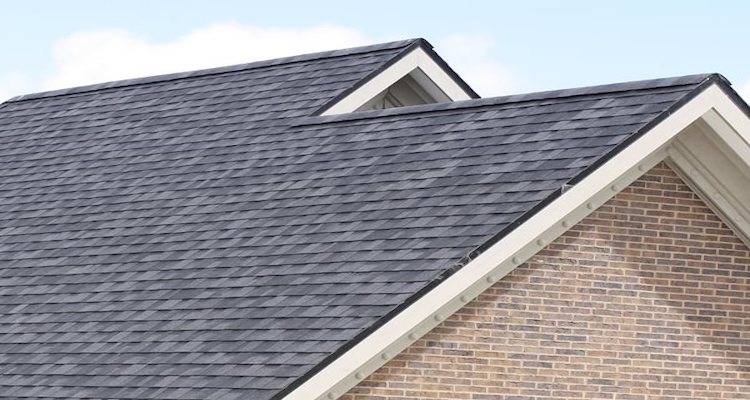
It will also need to meet the regulations for fire safety and energy efficiency. If the new roof is significantly lighter or heavier than the old roof, you may need to modify it or strengthen it to ensure it complies with building regulations.
With any roof, you are advised to speak to a structural engineer or surveyor before the work begins. If you are concerned about whether you may need building regulations approval, you should speak to your local council for advice before the work goes ahead.
How to Clean and Maintain a Roof
Here's a list of tips on how to keep your roof clean and maintained:
Remove Dirt and Debris
You should inspect your roof periodically for leaves and sticks. These can hold moisture and can cause damage to your roof.
If you notice debris on your roof, you should aim to remove it with a broom as soon as possible.
Keep an Eye on Nearby Trees
Nearby trees can become an issue for your roof when the branches grow and hang over your roof. Branches could cause damage to your roof, especially in bad weather, where leaves and branches are likely to drop onto your roof.
Some trees could also act as a bridge between the tree and your roof, allowing animals to walk onto your roof and potentially cause damage. With this in mind, you should try to keep on top of trimming back all overhanging trees around your roof.
Inspect The Roofing Materials Periodically
You should inspect your roof often to ensure that it remains in perfect shape. Look out for the following:
- Loose, curled, cracked, or missing shingles
- Insect infestations or rot
- Holes, bends, or dry or loose caulk
- Damage to the chimney and any vents
- Rust on any metal pieces
If you notice any of the above, these will need to be repaired or replaced as soon as possible.
Keep Your Gutters Clean
It’s also important to check your gutters and downpipes periodically to ensure they are working effectively.
You should check for cracks, damage, dirt and debris. You should clean out your gutters and downpipes around twice a year to ensure they continue to work properly.
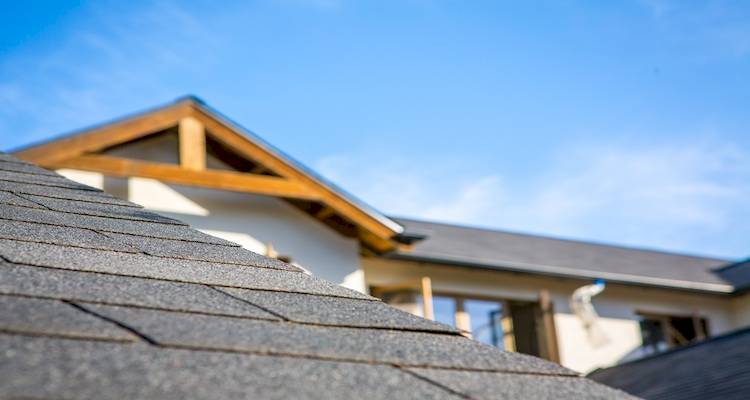
Questions to Ask When Hiring a Roofer
There are several things you may need to consider when finding the right contractor to install your new roof for you. Below is a list of common questions that you should ask when looking for the right contractor for the job:
- Does the contractor have any qualifications that relate directly to installing roofs?
- What equipment will the contractor be using to complete the job? Will they be using the correct type of equipment? Do you need to provide any equipment?
- Does the contractor possess any form of insurance for the work? You should look for contractors who have insurance that covers property damage, personal injuries, and a work guarantee.
- How much experience does the contractor have in installing roofs? Can they provide any testimonials or evidence of previous work? Can they provide photos of previous work?
- Does the contractor offer any guarantees with their work? How long does the guarantee last? What issues are covered under the guarantee? Will the contractor fix any issues that arise?
- Will the contractor adhere to all building regulations and rules when completing the work?
FAQs
Which roof materials are the best?
Which type of roof is best for a garage?
How often should I inspect my roof?
Regularly inspecting your roof can help you detect any issues and get them repaired before they become an even bigger issue.
How long will a new roof last?
It is generally thought that the standard amount of time that your roof should last is around 20 years.
What is a flat roof?
Flat roofs can be made from many different materials such as roofing sheets, roofing felt or even rubber roofing. They can serve as a great type of roof for many different structures. They are most commonly found on garages, sheds, and outbuildings.




